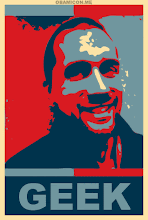**Disclaimer: I am a fanboy of Jane Bozarth's. I attend what I can of hers while at conferences. She is a 2 quart carton of amazingsauce. In other words - This will not necessarily be impartial, shall we say.**
(Recap of the presentation materials at http://www.diigo.com/user/jbo27712/showyourwork )
"Last year this was an ignite presentation for three minutes. Now it's a book."
"Our state employee discipline policy is 47 pages long, then HR gets mad that managers aren't carrying it out."
WHAT DOES LEARNING LOOK LIKE
In an organization, we deal very often with much formal endeavors, but more often than not, the informal events are more impactful with regards to learning. Hallway convos, workplace engagement while completing a task, etc....they're all going on.
Instead, we're jammed into silos...How many times have you finished a product and found someone had already done something similar, or found the info you needed a day or two too late? And you can't just add social media on top of a silo structure...it doesn't work. We need to be more permeable, more accessible, and less frustrated.
TACIT KNOWLEDGE MANAGEMENT
Let's get away from complicated processes and models. How can we keep it NOT cumbersome...not another TPS report?
WHY DO PEOPLE SHARE?/INTENTIONAL LEARNING: ONBOARDING
How many of us have new employees that can't fathom why they have to sit through all that...'stuff' up front? Everyone. BUT...one organization was mentioned that required their new employees to blog twice a week, and they began to embrace it. They began to understand by sharing their thoughts. YouTube is another venue for that Sharing-Based Learning...essentially like a video blog.
As Jane works in government, she referenced that the state is under more and more pressure to maintain more transparency. Still, their 'stuff' is composed in government-ese. She references a blog from the UK...provides names, projects, and so on. Provides the 'open window' concept...you see real people doing real work. Where else can we do this?
DemoFest is a prime example of when and how people share to learn. It is people showing their work...showing JUST WHAT THEY DO.
The benefits? Explicit, transparent leads to more open forum for suggestions, elimination of rework, easier evaluation of employees' performance, and several others. The benefits are there, but how do we make this happen? How do we encourage that change to occur?
"If you don't work out loud, management won't see it at all."THIS IS WHY I DID IT THAT WAY
Having people articulate the "WHY" of what they did can be very useful. Font selection alone, as given example, really spoke volumes: You wouldn't think twice, not being a typesetter (digital), but this guy in this example showed just how important it could be. And it's important. Maybe not immediately to you, but to someone. Allow people to show that.
BEFORE/AFTER/IN PROGRESS WORK
The videos we see on YouTube are typically the end piece. What happens in the middle? At the beginning? Towards the end before the finish? All of these points can show information, can teach lessons, can give guidance. Show it, keep it open, let people see it - It helps. This smacks true for what I do - Prior to sharing the SME template with the clientele, there was a lot of misunderstanding and not getting it. When I explained the "why" and showed the process (so much so that I engaged them in it), they gained new knowledge, a new respect, and an overall 'got it' team attitude.
ASK FOR HELP
Reaching out can create a super-powerful crowdsourced end-product. And we can amplify our work. A State Legislation's definition of Professionalism grew from a small group effort, to a poster in an Australian workplace kitchen. 2 days' time...a whole globe away. Awesome.
NARRATE - TALK AS YOU GO..."SAY IT OUT LOUD"
Don't just narrate training...narrate as YOU learn. Terry Brock narrated his learning process of how to convert video to iPad. Bob Ross, crazy hippie painter that he was, would narrate his own learning, even his mistakes (happy little mistakes). Google Glass in the operating room will allow med students to learn through the eyes of residents...students teaching students. If the dialogue is there, the opportunity to absorb will be, as well. What's more, when accidents happen, go with it...don't be perfect...be a learning experience for someone.
(Side note - My Live Blogging is pretty much a live, unfiltered narration of what I'm learning in each of the sessions I'm in. Phenomenal.)
We enjoy things like DevLearn, because it's a community of practice...we're around like minded people. We understand each other.
"You say you want innovators and creative thinkers, but then you hire people who follow the rules."
CONCLUSION
Information should be free. It should be shared. People should be able to see what other people are doing...not just to be nosy, but to be aware...to be made intelligently aware of other efforts occurring. Keep sharing simple - There are enough wordswordswordswords going on...choose the medium that makes sense for what you're sharing. Choose what makes sense. Draw a picture, take a picture...don't just rely on the recipe card, be the Snapguide. You could have a 97 page recipe, or you could take 6 pictures. Let's stop making it difficult...share smart.
Subscribe to:
Post Comments (Atom)


Good concise record of that session. Thanks for posting it!
ReplyDeleteAwesome! Glad you liked!
ReplyDelete